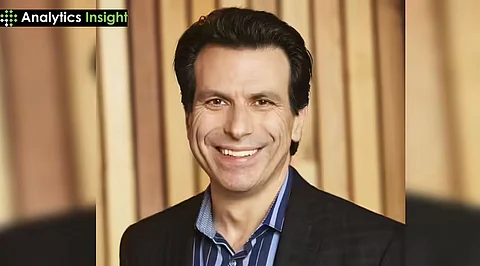

Andrew Anagnost, President and CEO of Autodesk, is a visionary leader who drives innovation in design, engineering, and cloud-based solutions. With experience at Lockheed, NASA Ames, and EXA Corporation, he possesses extensive expertise in product development and strategy. Since joining Autodesk, he has spearheaded the company's transformation into a global powerhouse, advocating for cloud technologies and subscription models that are shaping the future of construction, manufacturing, and digital design.
Andrew Anagnost studied mechanical engineering at California State University, Northridge. He then pursued advanced degrees in engineering science, aeronautical engineering, and computer science at Stanford University. His research career included a National Research Council fellowship at NASA Ames Research Center, where he focused on aeronautics and simulation projects. This strong academic foundation, combined with practical research experience, led him to a successful career that bridges technology, product innovation, and corporate leadership.
Andrew Anagnost has built a diverse career, beginning as a composite structures and propulsion engineer at Lockheed Aeronautical Systems Company. He then advanced research as a postdoctoral fellow at NASA Ames and contributed to simulation and product development at EXA Corporation. Later, he joined Autodesk, where he progressed through various roles in marketing, strategy, and engineering leadership. Eventually, he became CEO, driving Autodesk’s evolution towards innovative cloud solutions and a customer-focused digital transformation.
Autodesk employs AI to modernize design, construction, and manufacturing. With Forma, TileGPT, and Community Match, Autodesk is fueling creativity, automating tedious work, and delivering smart, fast, and sustainable solutions across industries.
Autodesk AI: Autodesk AI can significantly enhance manufacturing. By automating complex processes, interpreting production data, and predicting and understanding challenges in production, it provides better accuracy, inspires innovation, and increases manufacturer’s cognitive abilities by providing intelligence and insight to optimize quality, performance, efficiency, and competitiveness in rapidly changing and evolving industries.
Integration of GenAI: Autodesk has integrated generative AI directly into design, construction, and entertainment solutions. This makes workflows easier and enhances creativity. It is included in many Autodesk tools, such as Forma, AutoCAD, and Flow, which enable creators and engineers to reduce repetitive tasks and work smarter, while also inspiring unique and creative new project concepts.
Trusted AI: Autodesk champions trusted AI by emphasizing responsibility, transparency, and security. With strong governance, it protects privacy, reduces risks, and ensures ethical, reliable AI enabling creators to innovate confidently while meeting global standards and regulatory compliance requirements.
Autodesk AI: Autodesk AI is transforming the construction industry, enhancing workflows, forecasting risks, and informing better decisions. By automating documentation, bids, cost, and more, decreasing errors made by contractors and subcontractors, and increasing outcomes on the job site, teams can build better, faster, and with confidence knowing they are delivering the best possible project.
TileGPT: Autodesk supports sustainable design using products powered by artificial intelligence, such as TileGPT. TileGPT automates repetitive and tedious design tasks, quantifies design trade-offs during conceptual design development, and ultimately enhances designers' daily creativity. TileGPT helps architects create more low-carbon, high-performance buildings, striking a balance between livability, profitability, and environmental impact in pursuit of net-zero goals.
AI Construction Tools: Autodesk is transforming the construction industry with AI tools like Construction IQ, symbol detection, phototagging, and more, enabling construction companies to streamline workflows, mitigate project risks, and make smarter, faster, and data-driven decisions throughout all phases of a project.
AI in CRM: Autodesk is transforming customer engagement within its existing customer base and new markets for CRM, leveraging Community Match. Community Match is a forum that brings Autodesk users together with the right expert. Community Match is powered by machine learning and automation, elements that open the door for faster support, improved collaborative efforts between experts and users, and provide a much more inclusive user community focused on solutions.
Andrew has a net worth exceeding $31 million, almost all of which is derived from his ownership of 105,213 shares of Autodesk. In the process of selling Autodesk shares, and through other insider transactions, he has developed a strong financial portfolio. Along with compensation of over $20.6 million, Anagnost's achievements are evidence of his importance in helping Autodesk grow, increase its market size, and solidify himself as a titan in technology.
Under Andrew’s leadership, Autodesk has transitioned to a subscription-based SaaS company, accelerating the widespread realization of cloud solutions in design, construction, and manufacturing. He has successfully driven the exponential growth of Autodesk Inventor, multiplying revenue and strengthening it as an engineering software platform. In addition to his work at Autodesk, he serves on the Boards of Directors of Autodesk and HubSpot, steering innovation strategies and partnerships that keep Autodesk at the forefront of technology solutions for companies affecting global industries.
Andrew Anagnost has faced some limited but meaningful controversy, including inquiries from investors to review financial practices, while also facing backlash from architects over issues with Autodesk Revit's costs, development speed, and changing business model.
Leadership Under Scrutiny: Andrew faced controversy after investor Starboard Value requested that the Autodesk board of directors reconsider Andrew's leadership due to accounting problems, aggressive sales practices, and internal warnings of potential financial manipulation to meet targets.
Customer Backlash: Andrew received complaints from several large architecture firms regarding issues with Autodesk Revit. They expressed concerns over the slow pace of development, rising costs, and the challenges associated with licensing the software. In response, an open letter from these firms accused Autodesk of employing aggressive business practices. Andrew defended the company's approach by assuring stakeholders of enhanced transparency and committing to a more user-centric strategy to improve the software.
